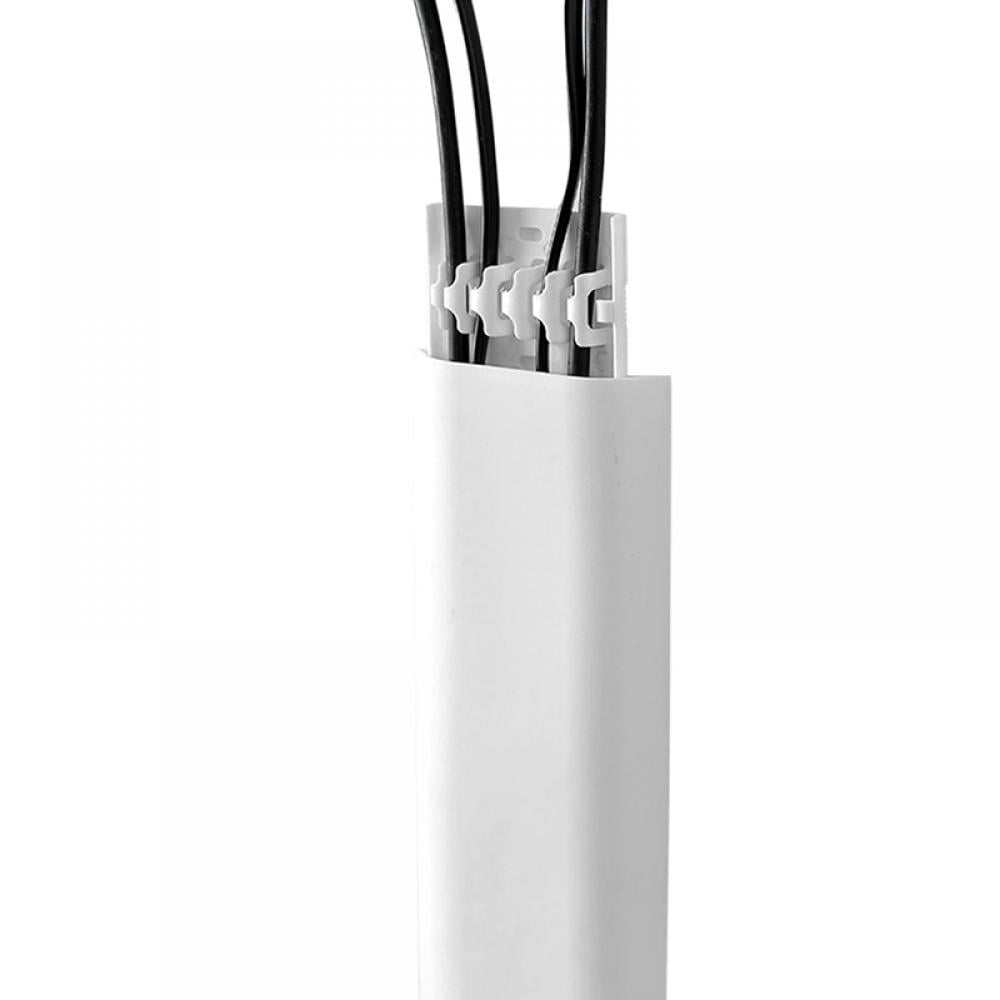
#Wall tv cable hider install
If you choose this hider, you wouldn’t even need to bring out any other tool to install it. Their package includes couplings, flat elbows, inside elbows, outside elbows, a T-fitting, and multiple cable raceways.įurthermore, they added a PVC saw, a paper measuring tape, some screws, and adhesive tape. If you’re looking for a complete in wall cord hider alternative, Eveo is the kit you should go for. I just measure the required length, cut it as desired, peel off the rear tape cover, and stick it! It’s that quick and easy. When I install this, I don’t need a screw and drill combination. What I love best about this product, though, is that it comes with a robust self-adhesive backing. It also protects the cable inside from accidental damage, like bumps from nearby furniture. At first glance, you wouldn’t even notice the cable raceway, which is a part of the baseboard.ĭ-Line uses high-grade PVC material for their cable raceways, so I am sure that it will hold its shape and won’t miscolor even years after installation. You can install this right above the wall baseboard, and it won’t look out of place. It’s half-round profile also fits most interiors perfectly. This item is a very discreet solution for concealing wiring. That makes my installation almost invisible – as if it’s a part of the room’s original design. I really like this brand because they come in different colors that match most baseboard hues. I’ve worked with D-Line cord hiders for wall for the longest time. With the proper placement and color, this cord hider literally hides and blends on your wall. One more thing, although it only comes in the color white, its surface is easily paintable – allowing it to blend in the environment that you put it. Quality-wise, I get excellent value for money for this item. However, I had no such problems with this item. I have trouble installing softer cord covers because they would bend when I install them, especially for longer distances. I also like that this cable raceway kit is rigidly constructed. Furthermore, I have the option of installing it with either adhesives or screws – giving me the flexibility to use it even on surfaces that the included tape won’t adhere to. They’re also easy to cut with a hacksaw or even sharp cutters, allowing me to customize its length to my requirements with little effort. Their cord cover set includes couplings, flat elbows, an inside elbow, an outside elbow, and, most importantly, a couple of T-fittings. When I install for offices or households with multiple cords converging on a single point, I prefer this brand because of its inclusions.
#Wall tv cable hider how to

Whether you're looking to conceal, reroute, or organize your TV cables, these are some of the best ways to do it. Cable boxes are pretty handy for those with mounted televisions, too.

Fortunately, a few best-selling kits on Amazon help streamline the process.Īnd while those with TV stands or consoles probably don't need on-wall or behind-wall solutions, they might benefit from floor boxes that keep wires (and power strips) condensed and hidden. At the most, you'll need to know how to find studs and connect electrical plates. As a result, it's a more permanent method that, at the very least, requires a basic knowledge of power tools and drywall cutting.

These solutions require that you cut into your wall to feed wires through.

The best cable management sleeves are easy to adhere for convenience and can be painted so they further blend into your wall.īehind-the-wall solutions are admittedly a lot more work, but for truly invisible TV wires, many buyers think it's worth it. Note, however, that this solution will still be visible - it'll just be streamlined and much less noticeable. (They're also usually the best option for those with hard-to-cut wall materials, like brick or concrete, too.) Most on-the-wall solutions feature some kind of tube or sleeve that goes from your television to your outlet, hiding the cords underneath. On-the-wall solutions are often affordable and the easiest to do yourself, since they don't require any tools or cutting. For on-floor cables, there are also breezy solutions to keep those tidy but accessible. The best ways to hide TV cables come in two primary types you'll have to decide between: on the wall and behind the wall. Luckily, there are easy, inexpensive solutions to making sure your finished result is sleek, clean, and organized. If you've spent the time and effort to mount your television, you probably don't want wires hanging down where you can see them.


 0 kommentar(er)
0 kommentar(er)
